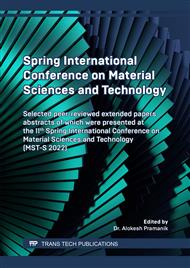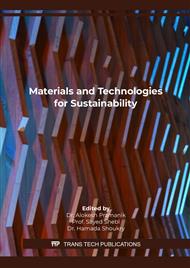p.75
p.85
p.93
p.101
p.109
p.119
p.129
p.147
p.161
Simulation Research on Cold Extrusion Strengthening and Reaming of 7050 Aluminum Alloy Plate Hole
Abstract:
The finite element software abaqus is used to establish the model of split-sleeve cold extrusion (elastic-plastic) of the 7050 aluminum alloy test plate with hole and the reaming model after cold extrusion, and the processes are simulated. In these processes, the simulation results of cold extrusion are compared with the measured results, the law of residual stress distribution after cold extrusion is explored, and the influence of the amount of reaming on the distribution of residual stress during the reaming process is discussed. The simulation results show a good agreement with the experimental data; the residual compressive stress after cold extrusion increases first and then decreases from the intrusion end to the extrusion end. Specifically, the maximum value is near the middle surface, and the value of the second half is larger than that of the first half; after the cold extrusion with the split sleeve, a "ridge" appears, leading to uneven distribution of the residual stress and extrusion amount along the circumference of the hole. Moreover, the minimum value of the tangential residual stress lies on the intrusion surface, vertical to the “ridge”. After reaming, new residual compressive stress will be introduced, which will increase the residual compressive stress on the intrusion surface. In this sense, proper reaming can increase the residual compressive stress and its peak value, resulting in a fatigue gain.
Info:
Periodical:
Pages:
109-115
Citation:
Online since:
May 2022
Authors:
Price:
Сopyright:
© 2022 Trans Tech Publications Ltd. All Rights Reserved
Share:
Citation:



